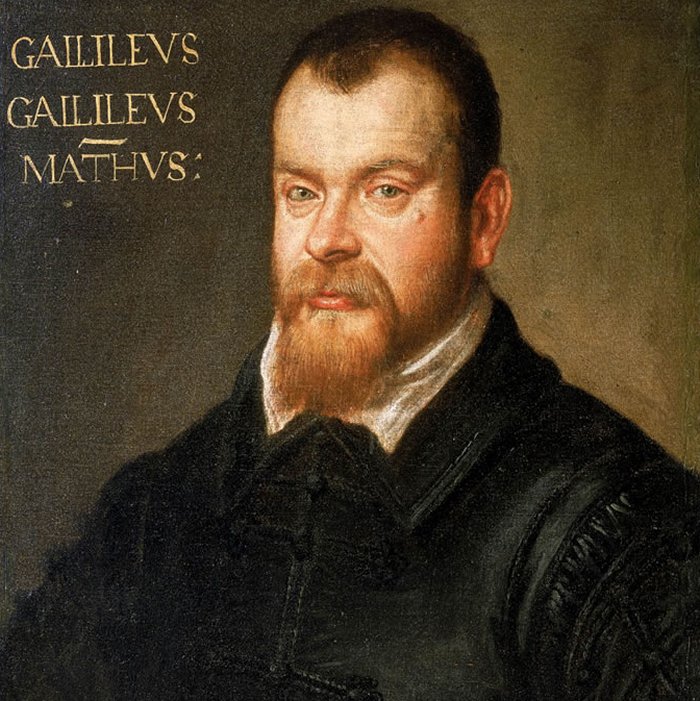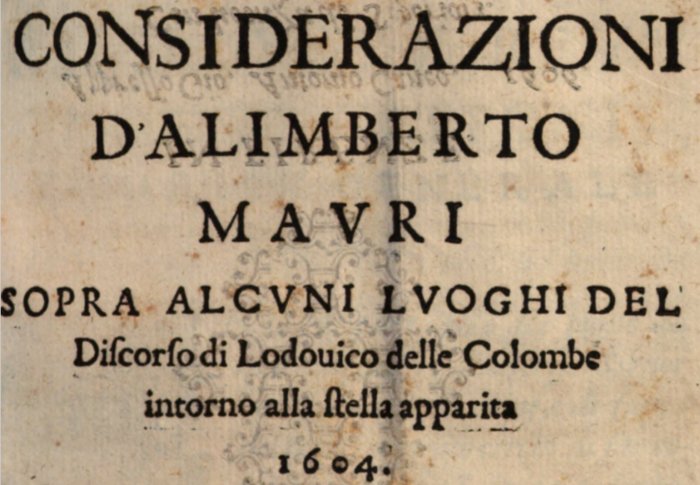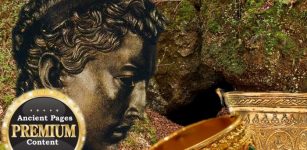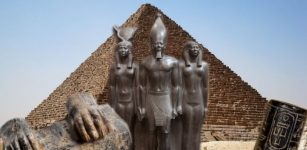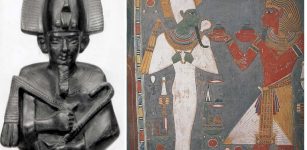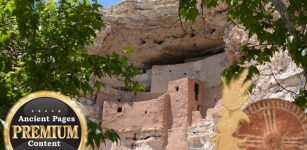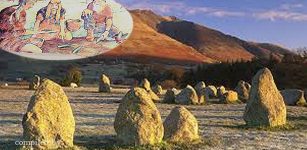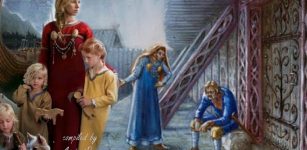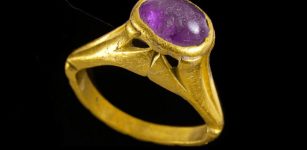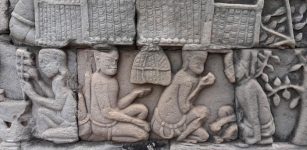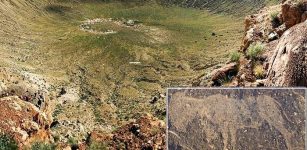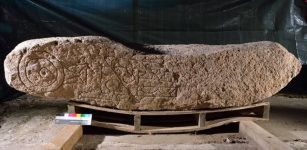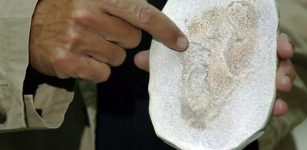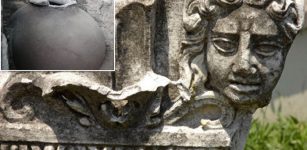Galileo Galilei Wrote A Controversial Astronomical Treatise Using A Pseudonym
Conny Waters - AncientPages.com - A researcher at the Department of Philosophy and Cultural Heritage of Ca' Foscari University of Venice, Dr. Matteo Cosci, has retrieved archival information which confirms that the treatise "Considerazioni Astronomiche di Alimberto Mauri "(1606) was in fact written by Galileo Galilei, the illustrious mathematician from Pisa.
Portrait of Galileo Galilei, National Maritime Museum, 1605–1607.Image credit: - Public Domain
Galileo used a pseudonym and the author's uncertain identity had not been confirmed until now. Dr. Cosci closely examined original documents preserved at the National Central Library of Florence for the purpose.
Not only forged documents
Before this discovery was made, the New York Times had revealed that some of Galileo's documents held at the University of Michigan and at Morgan Library in New York City were in fact counterfeits made by the infamous forger Tobia Nicotra in the early 20th century. Professor Nick Wilding of Georgia State University, who discovered the counterfeit, demonstrated that the filigree of the paper that the texts were written on cannot predate the 18th century.
When these documents were authenticated at the start of the 20th century, the authentication process was based on other documents attributed to Galileo, which were subsequently revealed to also be forgeries. One of such documents was a counterfeit letter signed by Galileo that was thought to accompany a book entitled "Libro della Considerazione Astronomica."
Starting in the late 1970s, in order to explain the reasons behind this letter, scholars hypothesized that the accompanying letter was proof that Galileo had actually written a controversial treatise, "Considerazioni Astronomiche di Alimberto Mauri."
This treatise was known to have been written under pseudonym, and since its publication in 1606 it had been attributed by some to Galileo himself. For one, Fortunio Liceti—Galileo's colleague at the University of Padua—referred to Aliberto Mauri as someone who "pretended" to be an astronomer though he might rather have been an expert mathematician.
However, the true identity of the author was never established with certainty. In the view of some scholars, the accompanying letter—which is currently hosted in the Fondo Cardinale Pietro Maffi in Pisa—seemed to confirm that Galileo was indeed the author of the "Considerazioni Astronomiche." Despite the fact that now the only document which seemed to support the ascription of authorship to Galileo has been declared false, the emergence of different original documents makes this identification certain.
The retrieval
Matteo Cosci found important information among the papers in the collection "Gal. 42" at Biblioteca Nazionale Centrale di Firenze, which contains Galileo's Frammenti e primi abbozzi relativi al trattato galileiano "Delle cose che stanno su l'acqua."
Credit: Ca' Foscari University of Venice
On the whole, these handwritten papers are a collection of notes taken in different periods of time and on different topics, including some references to the "stella nova" (new star) of 1604 that diverge from the interpretation that at the time was being given by the Florentine philosopher Lodovico Delle Colombe.
Even though they were not about the same topic, Galileo's brief notes on the "new star" were evidently collected together with his others about the floating bodies because they were addressed against the same opponent. Dr. Cosci noticed both their apparent misplacement and their peculiarity while he was systematically examining all the handwritten drafts of Galileo on the "new star" dispute.
Previous cataloging of this material had already confirmed that it was written by Galileo in opposition to Lodovico Delle Colombe's writings. However, these notes had never been considered relevant enough to be included in the national edition of Galileo's work—in fact, they remain unpublished.
Among these papers by Galileo, on page 31 recto, there is a list of "places where [Lodovico Delle Colombe] speaks of me with contempt." Dr. Cosci noticed that those "places" are precise references to some selected textual passages in Lodovico Delle Colombe's Risposte (i.e. Answers).
Then he realized that those passages do not openly attack Galileo (who is never even mentioned), but do attack Alimberto Mauri. The fact that Galileo felt personally "attacked" whenever Alimberto Mauri was attacked in print confirms that Alimberto Mauri was his alter ego. Simply put, in these private notes, Galilei himself reveals his identity as the one hiding behind a pseudonym.
Overall, the autographic documents examined by Matteo Cosci are currently the only authentic piece of documentary evidence that enables the attribution of Considerazioni Astronomiche to Galileo.
Why did Galileo use a pseudonym?
Galileo was successfully working in Padua, but his salary no longer suited his own needs and his family requirements. As Stillman Drake previously hypothesized, Galileo published this treatise in an attempt to find patronage beyond the borders of the Venetian Republic, and more specifically in Rome—in fact, the treatise was dedicated to none other than the Pope's Treasurer.
However, those were the years of the Venetian Interdict (a diplomatic quarrel between the Papal Curia and the Republic of Venice), so it would have been unwise of Galileo to place his name on a treatise that was dedicated to the public enemy.
Galilei had used pseudonyms before. He had participated with the assistance of one of his students in a debate on the same star using the pseudonym "Cecco da Ronchitti." In fact, Lodovico Delle Colombe indirectly addressed Galileo as "la Signora maschera" (i.e. Mr. Mask), "Mauri," "Cecco," and "quel dottor che leggeva in Padova" (i.e. "that professor that was a lecturer in Padua"). Delle Colombe subsequently wrote his Risposte keeping Galileo in mind, but hesitating to openly identify his adversary.
This, too, contributed to the general sense of uncertainty over authorship. Another note discovered by Dr. Cosci shows that that Galileo initially wanted to reply further to Lodovico Delle Colombe, but he concluded that in the end the opponent did not even deserve his time. Nevertheless, the dispute between Galileo and Lodovico Delle Colombe continued and escalated during the first years of Galilei's stay in Florence, when the use of a pseudonym was no longer necessary for the by then famous author of the Sidereus Nuncius.
Conclusions
The radical re-examination of these unpublished documents has confirmed the attribution of Considerazioni astronomiche to Galileo Galilei. The treatise—a new edition of which is being prepared by Dr. Cosci—shows textual similarities with other writings of Galileo on different topics and from different periods of time, such as De Motu, Considerazioni circa l'opinione copernicana, and Dialogo di Cecco da Ronchitti, as well as with a postilla on his copy of Delle Colombe's text on the new star.
Moreover, at the time of the debate, the student Willem van Thienen had added in plain the name "Galileo Galilei" on his copy of Risposte, just below the title "certa maschera saccente nominata Alimberto Mauri" ("a knowing mask named Alimberto Mauri").
Professor Nick Wilding has commented that "this is an excellent example of how patient and intelligent archival research can restore some of the damage inflicted by forgers. Dr. Cosci has shown us that a combination of skepticism and skill will lead us to historical truth."
In addition, Prof. Peter Barker (University Of Oklahoma),who has been aware of Cosci's research, claimed that "Sidereus Nunciustells us when, how and what Galileo made telescopic observations about. But the perspective of Considerazioni Astronomiche shows uswhyhe made those observations three years later."
In sum, a new chapter can be added to the monumental collection of writings by the person who revolutionized Western science. Among the most interesting arguments in this work can be listed, for instance, the hypothesis of existence of mountains on the surface of the moon from a purely perspectivist point of view, the idea that physical causes are the actual reasons for explaining the regularity of celestial motions that apparently follow nonuniform paths, and the criticism of those who reject astrology without having the necessary astronomical knowledge to properly do so.
Therefore, "Considerazioni Astronomiche di Alimberto Mauri" is written by an unusual, yet recognizable Galileo, during a transition phase in which he was at once looking for new patronage and trying to confute the most retrograde Aristotelian tenets, just a few years before his discoveries with the telescope would lead him to move to Florence and then make him famous all over the world.
For that matter, the printing privilege informs us that the treatise was published in Florence with the assent of Paolo Vinta, prime secretary of the Grand Duchy and brother of Belisario, who was in turn Galileo's friend, correspondent and shortly afterwards mediator for his desired rerturn in Tuscany.
The study leading to this result was originated within the ERC research project "Aristotle in the Italian Vernacular: Rethinking Renaissance and Early-Modern Intellectual History (c. 1400–c. 1650)" , and that is currently being pursued at Ca' Foscari in partnership with the Department of History of Science, Technology, and Medicine of the Università of Oklahoma within the Marie Sklodowska-Curie project "The Ophiucus Supernova: Post-Aristotelian stargazing in the European context (1604-1654)", for which Dr. Cosci is responsible.
Original source -Ca' Foscari University of Venice
Written by Conny Waters - AncientPages.com Staff Writer

